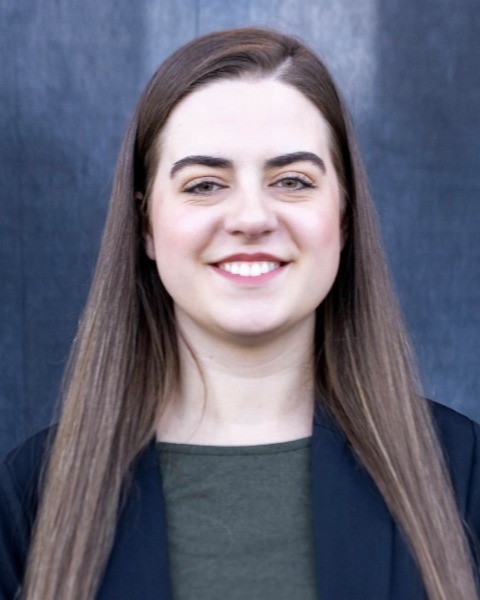Anatomy Education: Teaching Methods & Innovations Posters
Poster: Anatomy Education: Teaching Methods & Innovations Posters
118 - Using Familiar Simplicity to Teach Unfamiliar Complexity
Saturday, March 23, 2024
5:00pm - 7:00pm US EDT
Location: Sheraton Hall
Poster Board Number: 118
There are separate poster presentation times for odd and even posters.
Odd poster #s – first hour
Even poster #s – second hour
Co-authors:
There are separate poster presentation times for odd and even posters.
Odd poster #s – first hour
Even poster #s – second hour
Co-authors:
Kelby Kosel - Sam Houston State University College of Osteopathic Medicine; Jailenne Quinones Rodriguez - Sam Houston State University College of Osteopathic Medicine; Mario Loomis - Sam Houston State University College of Osteopathic Medicine

Elizabeth Matthews
Sam Houston State University College of Osteopathic Medicine
Lufkin, Texas, United States
Presenting Author(s)
Abstract Body : Title: Using Familiar Simplicity to Teach Unfamiliar Complexity
Introduction & Objective
Laryngeal anatomy is a complex subject area for many students. The wide array of extrinsic and intrinsic muscles with similar-sounding names and the interplay of cartilaginous structures with the pharynx and tongue make for a challenging deposit of information. Multiple online technologies have been implemented in attempts to improve student learning with variable success. We hypothesized that an online educational module using the familiar action of swallowing to teach the unfamiliar complexity of laryngeal structure would improve student comprehension of the subject.
Materials & Methods
A series of interactive videos were created, breaking down the familiar action of swallowing into its essential component parts. The novel module used cadaver simulations aligned with live endoscopy and fluoroscopy. Students clicked on answers to questions designed to help them associate the structures with their functions. Those clicking on wrong answer choices were led back through the process with additional guidance. Students were randomly assigned to two cohorts within a class of 160, with 17 students agreeing to participate in the novel module and 27 in the control module. The control module covered the same material, including clinical correlations, but in a purely didactic format. Timed pre and post-tests were taken by all the students, consisting of high order questions. The average amount of improvement from pre to post-test was compared between the two cohorts.
Results
A comparison of the average pre and post-testing results of students using the novel module demonstrated a significant (p< 0.0115) improvement of 22.34 percentage points. The same comparison in the control cohort demonstrated an improvement of 10.38 percentage points (p< 0.0238).
Conclusion
A novel online laryngeal anatomy module using endoscopic and fluoroscopic visualization of swallowing aligned with cadaveric anatomy led to an average improvement between pre and post-test results of 22.34 percentage points versus 10.38 in a control didactic module.
Significance/Implication
Using the apparent simplicity and familiarity of swallowing to teach the complexity of laryngeal structure led to an average improvement in pre and post-testing that was more than double that of a control module. In post-module evaluations, students expressed appreciation for how the novel module helped them visualize the action of laryngeal muscles and kept them engaged. They also liked working at their own pace with stepwise questions, unlike in-class situations where questions may be answered before they have a chance to understand. Future work will address long-term retention of understanding beyond pre and post-testing.
Introduction & Objective
Laryngeal anatomy is a complex subject area for many students. The wide array of extrinsic and intrinsic muscles with similar-sounding names and the interplay of cartilaginous structures with the pharynx and tongue make for a challenging deposit of information. Multiple online technologies have been implemented in attempts to improve student learning with variable success. We hypothesized that an online educational module using the familiar action of swallowing to teach the unfamiliar complexity of laryngeal structure would improve student comprehension of the subject.
Materials & Methods
A series of interactive videos were created, breaking down the familiar action of swallowing into its essential component parts. The novel module used cadaver simulations aligned with live endoscopy and fluoroscopy. Students clicked on answers to questions designed to help them associate the structures with their functions. Those clicking on wrong answer choices were led back through the process with additional guidance. Students were randomly assigned to two cohorts within a class of 160, with 17 students agreeing to participate in the novel module and 27 in the control module. The control module covered the same material, including clinical correlations, but in a purely didactic format. Timed pre and post-tests were taken by all the students, consisting of high order questions. The average amount of improvement from pre to post-test was compared between the two cohorts.
Results
A comparison of the average pre and post-testing results of students using the novel module demonstrated a significant (p< 0.0115) improvement of 22.34 percentage points. The same comparison in the control cohort demonstrated an improvement of 10.38 percentage points (p< 0.0238).
Conclusion
A novel online laryngeal anatomy module using endoscopic and fluoroscopic visualization of swallowing aligned with cadaveric anatomy led to an average improvement between pre and post-test results of 22.34 percentage points versus 10.38 in a control didactic module.
Significance/Implication
Using the apparent simplicity and familiarity of swallowing to teach the complexity of laryngeal structure led to an average improvement in pre and post-testing that was more than double that of a control module. In post-module evaluations, students expressed appreciation for how the novel module helped them visualize the action of laryngeal muscles and kept them engaged. They also liked working at their own pace with stepwise questions, unlike in-class situations where questions may be answered before they have a chance to understand. Future work will address long-term retention of understanding beyond pre and post-testing.

